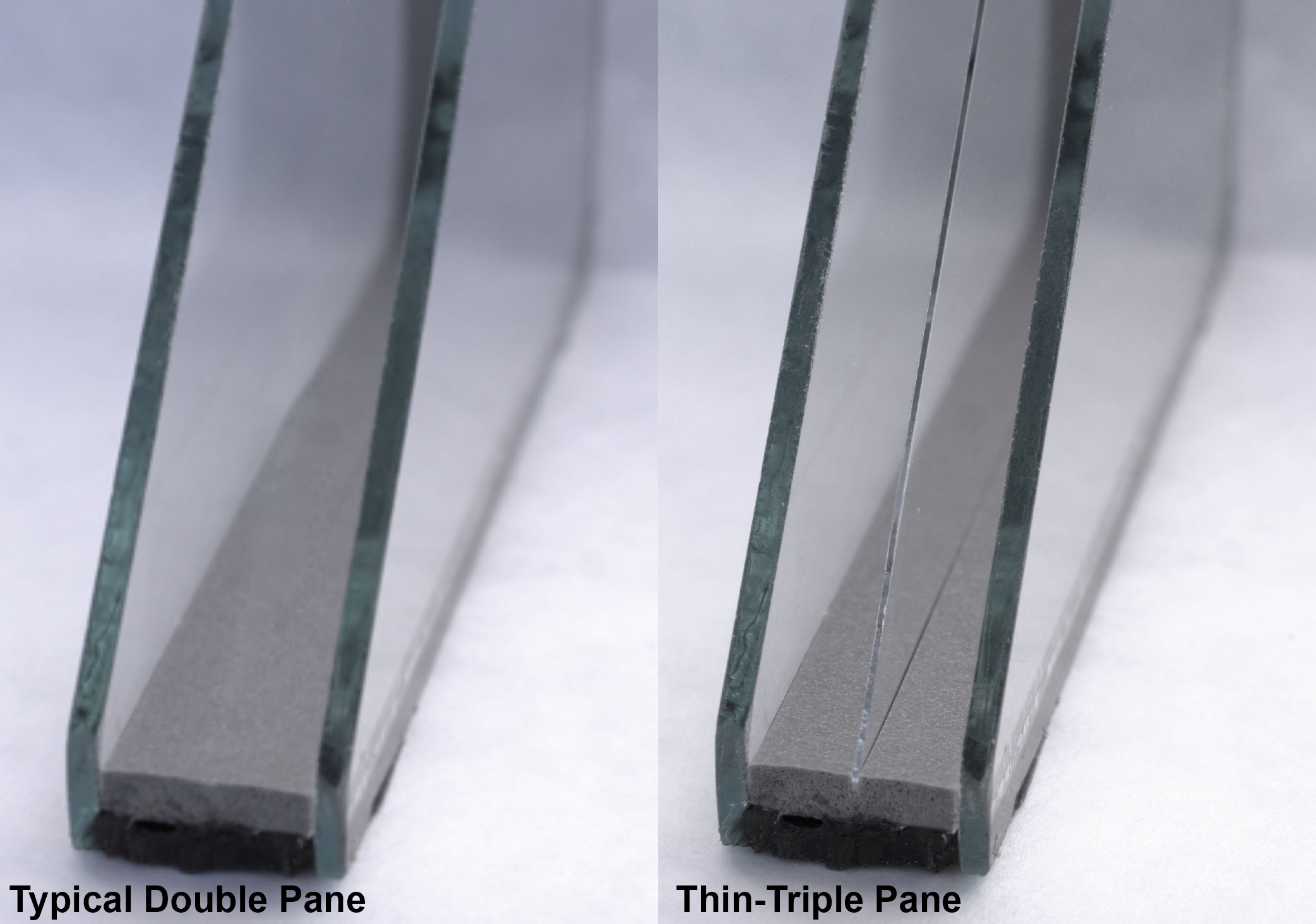
Berkeley Lab’s “thin triple” high-performance window can save on heating and cooling costs compared to typical double-pane windows. (Credit: Berkeley Lab)
Buildings account for a whopping 40% of total U.S. energy consumption, and windows are responsible for approximately 10% of that. High thermal performance windows reduce combined heating and cooling energy consumption of typical single family homes in California by up to 50% compared to existing single-pane windows, which are still found in 6.5 million, or 50%, of homes in California.
A $1.85 million grant by the California Energy Commission’s (CEC’s) Electric Program Investment Charge was recently awarded to Berkeley Lab to install energy-saving, thin-glass triple-pane windows in low-income communities in California. Thanks to years of investment and support from the CEC and the Department of Energy (DOE), Berkeley Lab researchers will work with industry partners to retrofit these high-performance windows into two multi-family buildings, each with eight tenant units, and 30 single-family housing units, all located in low-income California communities.
“By partnering with building and window manufacturers, including Cornerstone Building Brands, we hope that this demonstration project will remove barriers to the development and widespread adoption of highly insulating window technologies in the retrofit and new construction markets,” said Berkeley Lab Principal Scientific Engineering Associate Robert Hart, who is the lead researcher on highly insulating windows. “With more widespread adoption, energy-efficient technologies such as thin-triple windows, can become even more affordable and accessible.”
For more, click here.
For more background on these windows, click here.
Media contact:
Laurel Kellner, [email protected], 510-486-5375